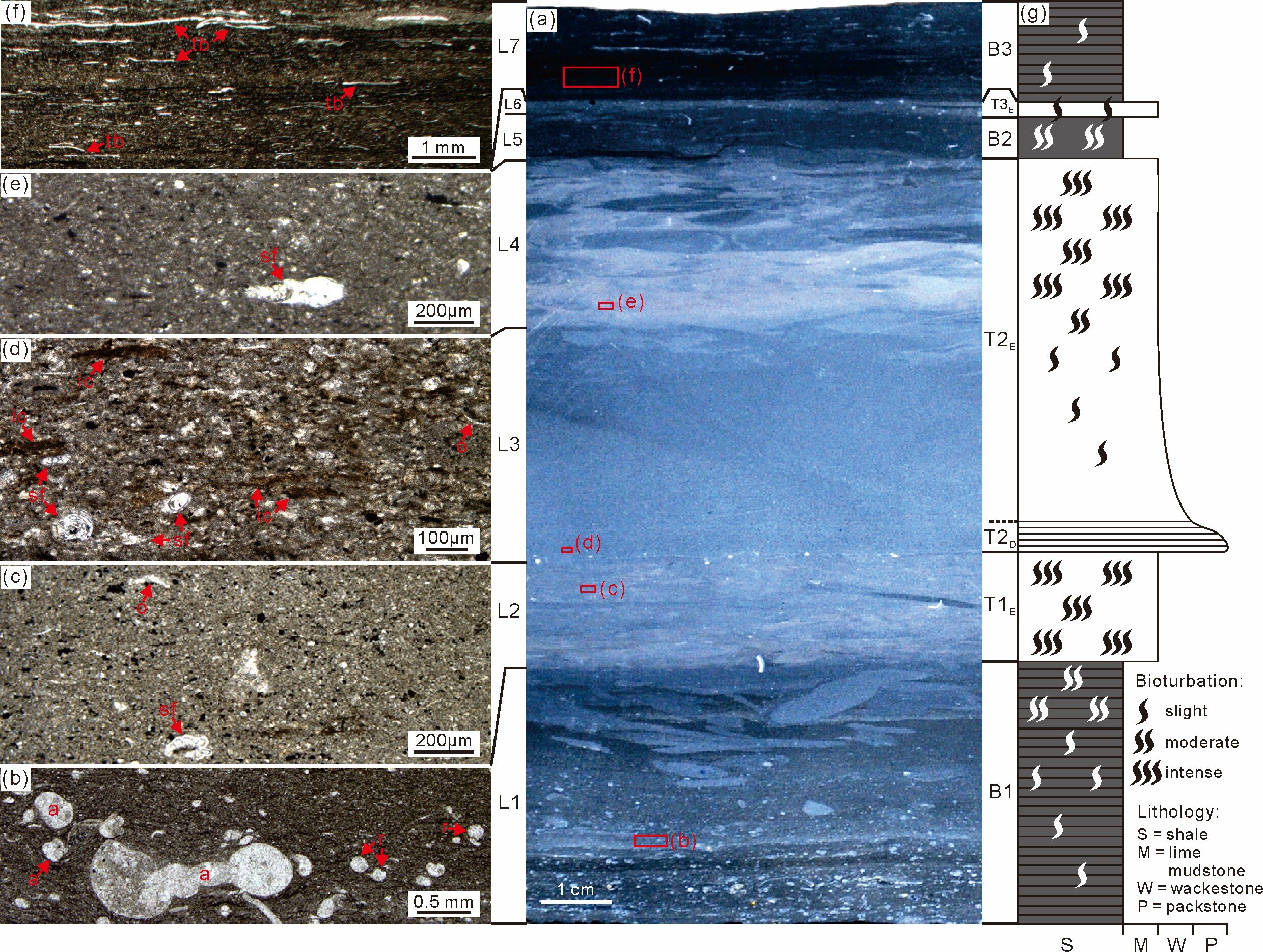Trace fossils are fossilized structures produced on or within a substrate by the life processes of ancient organisms, including tracks, trails, burrows, borings, and other structures. Ichnocoenosis, a suite of trace fossils representing the work of a particular benthic community, is a powerful tool for reconstructing sedimentary settings and retrieving paleoenvironmental factors.
Turbidity currents are an important mixing way for stratified waterbodies in modern oxygen-deficient basins. These density flows transport sediments and oxygen-rich waters from shallow-water environments to deep basins, which can considerably change the chemistry and oxygen content of the deep-basin waters. However, turbidity current–induced oxygenation events in oxygen-deficient basins have rarely been directly demonstrated in the geological record.
Recently, Assoc. Prof. Zheng Quanfeng and Prof. Cao Changqun from the Nanjing Institute of Geology and Paleontology of the Chinese Academy of Sciences (NIGPAS) conducted high-resolution sedimentological and ichnological studies on the upper member of the Talung Formation at Shangsi, Guangyuan City, Sichuan Province, southwest China, to reveal the dynamic process of turbidity current–induced benthic-marine oxygenation evidenced by sequential ichnocoenoses. This study was published in Geological Journal on July 11.
The researchers found that the studied interval consisted mainly of background sedimentation of black shale and rapid event sedimentation of fine-grained calciturbidite. The black shale contained fine laminations and weak bioturbation and lacked primary burrows (burrows produced during the deposition of the black shale), indicating anoxic benthic marine conditions. The calciturbidite was intensely bioturbated, and contain abundant primary burrows.
-
Fig. 2 Vertically polished slab (a) and line drawing (b) of the studied interval. Credit: NIGPAS
-
Fig. 3 Schematic drawings showing the ichnocoenosis succession and the dynamic process of turbidity current–induced benthic-marine oxygenations. Credit: NIGPAS
Based on cross-cutting relationships and burrow-fill features, they recognized three successive ichnocoenoses in the typical calciturbidites: the early-phase Thalassinoides/Scolicia (a questionable ichnogenus) ichnocoenosis, including Thalassinoides/Scolicia, Zoophycos, and Planolites, which has the largest maximum burrow diameter (MBD) and maximum penetration depth (MPD) and represents the highest oxygen level among the three ichnocoenoses; the later-phase Planolites-Zoophycos ichnocoenosis, including Zoophycos, Planolites, large Chondrites, and small Chondrites, which has the moderate MBD and MPD and represents the moderate oxygen level; the latest-phase Zoophycos ichnocoenosis, composed of monospecific Zoophycos burrows, which has the smallest MBD and MPD and represents the lowest oxygen level.
The Thalassinoides/Scolica ichnocoenosis was produced at the very end and immediately after the emplacement of the turbidites, representing the climax of the turbidity-induced oxygenation. The Planolites-Zoophycos ichnocoenosis was produced during a later stage after the emplacement of the turbidites, indicating a relatively more reducing bottom-water condition. The Zoophycos ichnocoenosis was produced during a further later but relatively long stage after the emplacement of the turbidites, indicating a much more reducing bottom-water condition.
“This study demonstrated that turbidity current is an effective way to locally oxygenate bottom waters in oxygen-deficient basins, which has significant impacts on benthic communities,” said Zheng.
More information:
Quan‐Feng Zheng et al, Dynamic process of turbidity current‐induced benthic‐marine oxygenation evidenced by sequential ichnocoenoses: An example from a Late Permian oxygen‐deficient basin, Geological Journal (2023). DOI: 10.1002/gj.4837
Citation:
Ichnocoenoses reveal dynamic process of turbidity current–induced benthic-marine oxygenation (2023, July 28)
retrieved 29 July 2023
from https://phys.org/news/2023-07-ichnocoenoses-reveal-dynamic-turbidity-currentinduced.html
This document is subject to copyright. Apart from any fair dealing for the purpose of private study or research, no
part may be reproduced without the written permission. The content is provided for information purposes only.
For all the latest Science News Click Here
For the latest news and updates, follow us on Google News.

